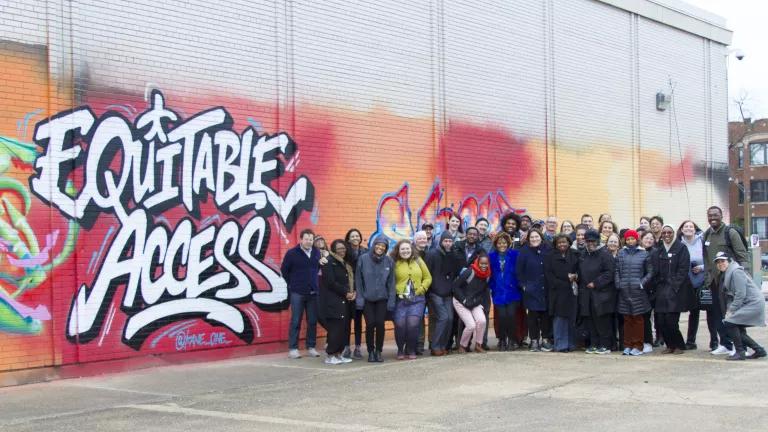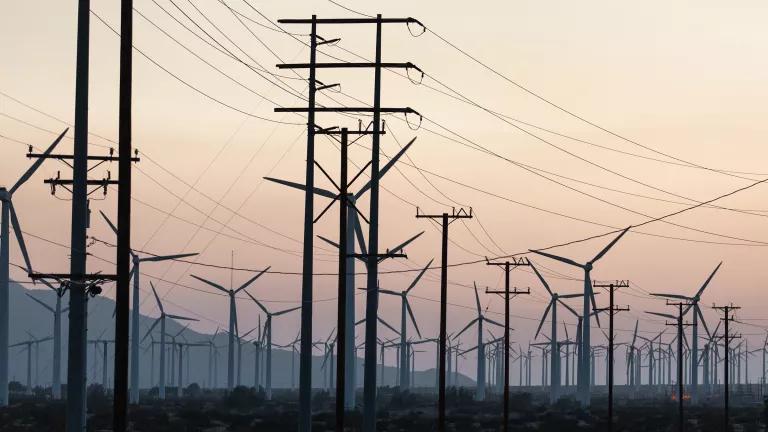Meeting the Moment of Our Housing Crisis
Climate justice begins when we recognize the adverse effects of extreme weather to our communities and the world and advocate to mitigate those costs and damage to us all.
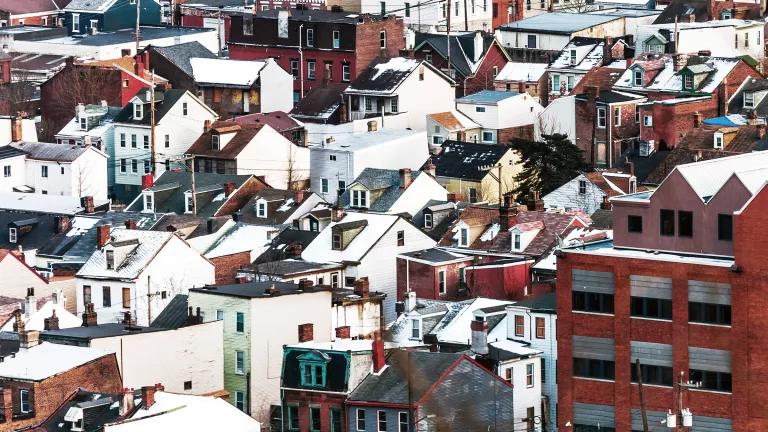
Homes in Pittsburgh, Pennsylvania, following a snow storm.
Peeter Viisimaa/Getty Images
In real time, the climate justice movement underscores the social, public health, and economic challenges and costs of adaptation and responding to climate change. This is crucial since it’s an inherently social issue that has unequal/unequitable consequences globally, particularly for marginalized groups in urban demographics.
In the U.S., from rising sea levels and catastrophic floods to wildfires and hurricanes, low-income residents are the most vulnerable, least protected and the most on their own when these natural disasters occur. That includes decisions made about whether they are sheltered in weather-resilient, energy-efficient, comfortable homes. So, as we enter Climate Week, it’s important that we address the current housing crisis tens of millions of people in our country are experiencing, which disproportionately impacts Black and Brown residents.
Racial and socioeconomic justice is key to climate action!
The lack of equitable resources for low-income Black and Brown residents continues to perpetuate an oppressive experience. Low-income residents too often are at risk of displacement, behind on their utility bills, experiencing homelessness, and facing other housing insecurities.
This year’s Out of Reach: The High Cost of Housing report from the National Low-Income Housing Coalition (NLIHC), an NRDC ally, describes in stark terms the housing crisis confronting our country. Many people can’t afford to pay rent, as you can see from this graph contrasting the wages in most professions and the cost of housing (the housing wage is defined as the hourly income level required to rent a home now):
This is exacerbated by rising rents this past year, a driver of the wider inflation of prices we’ve all experienced. NLIHC includes a graph in their report showing the spike:
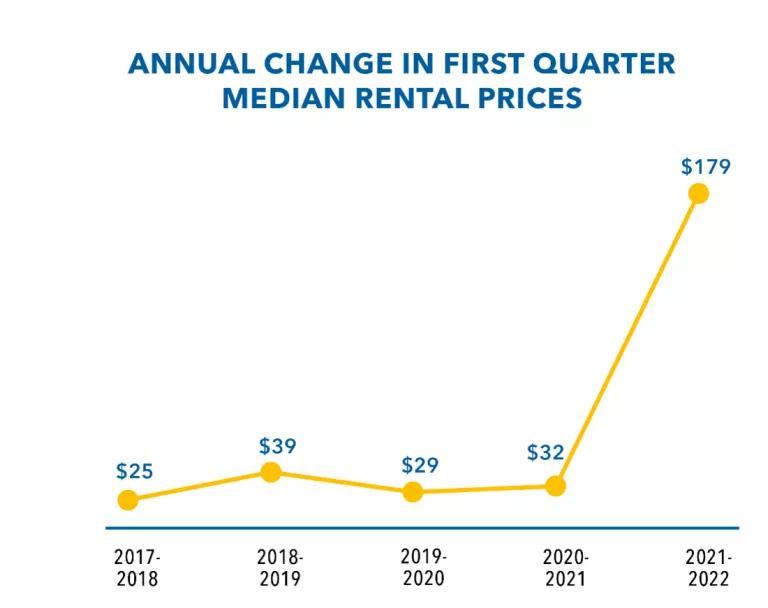
This housing crisis hobbles our wins in the climate justice movement. According to the NLIHC, “too many people can’t afford rent, which has been rising and driving all inflation up. Data supports a dire need to bridge the gap between incomes and housing costs and a need to expand and preserve the supply of affordable rental homes.”
Thankfully, there has been a recent federal response to this crisis, with research showing programs like the American Rescue Plan decreased eviction rates due to to the quick work by local and state jurisdictions (see this fact sheet from the White House describing the benefits of such federal responses). However, the data from NLIHC’s report reveals why people, particularly those in poor Black and Brown communities, are still suffering because for too many of them affordable rental housing is out of reach:
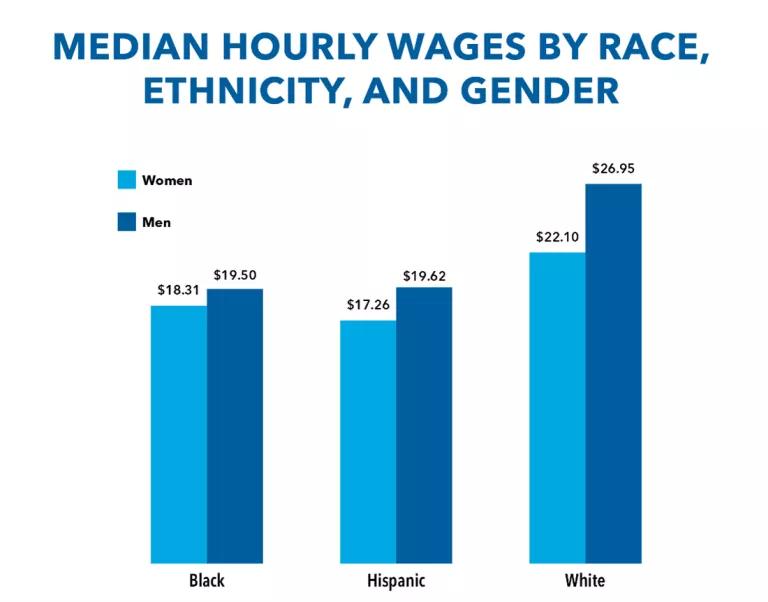
Historically, these are the same groups that are also directly impacted by displacement, homelessness, eviction, access to affordable housing, and fundamental human rights. Viable solutions to the affordable housing crisis and climate justice intersection have been proposed, but long-term policy solutions have not solved housing insecurities. Our public policy process has been ineffective for marginalized groups in urban areas.
Fortunately, multiple tools are available that public servants and agencies must use to meet the moment of crisis. For example, some current programs and policies like the Community Development Block Grant (CDBG) program and the Affirmatively Furthering Fair Housing rule are instrumental in ensuring that developers and landlords foster inclusive communities and not discriminate against Black Indigenous People of Color (BIPOC).
The solutions that can move the needle forward include:
- bridging the gap between housing costs and resident incomes, and
- expanding and preserving the supply of rental homes that are affordable and accessible to those with the lowest incomes.
Additionally, it’s crucial to expand emergency rental assistance to households in crisis along with strengthening and enforcing renter protections.
Our country has made remarkable leaps forward in federal policy in the last two years. The Infrastructure Investment and Jobs Act is making historic investments in transportation and water infrastructure improvements. And the new Inflation Reduction Act makes historic investments in climate and environmental justice.
The laws also include provisions helpful for increasing housing affordability. Specifically, the infrastructure law includes a one-year, severalfold boost to the Weatherization Assistance Program. And the new climate law includes improvements which our colleague Lauren Urbanek (and Deron Lovaas) wrote about here, including an innovative $1-billion program at the Department of Housing and Urban Development.
And the reality is that while these important new laws meet the moment for transportation, water, and climate issues, they fall short of the huge public investment we need in housing. Opportunity Starts at Home (a coalition of groups that includes NRDC) made this clear in its statement about the IRA, summing up:
“Congress missed an extraordinarily rare opportunity to address a primary driver of inflation and a critical issue facing the lowest-income and most marginalized households: skyrocketing rents and a lack of housing affordability.”
Opportunity Starts at Home advocates for substantial investments in three crucial policy solutions:
- Housing vouchers,
- public housing, and
- the chronically underfunded national Housing Trust Fund.
This is unfinished business, or, the next order of business, as we come to the end of two years of historic lawmaking by Congress. NRDC and our partners look forward to working with the Biden administration, HUD, and Congress to address the nation’s housing crisis in 2023 and beyond.



